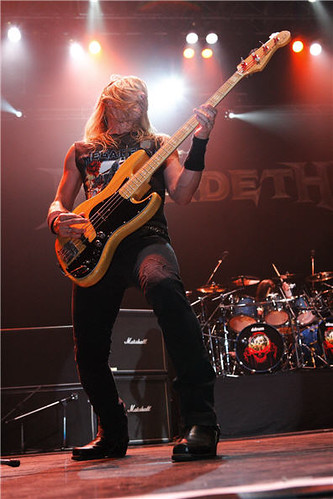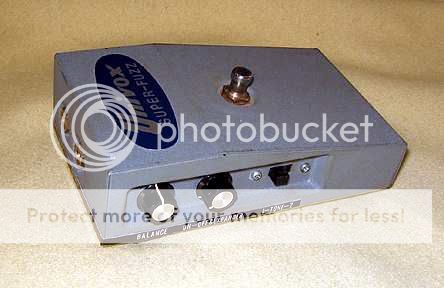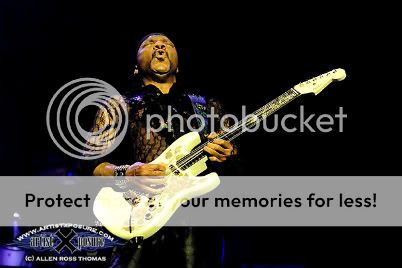Guitar legend, Ritchie Blackmore
Today we’re taking a look at the legendary guitarist, Ritchie Blackmore.
Founding member of the seminal hard rock band, Deep Purple, and band
leader of his own hard rock creation, Rainbow. He is one of the most
interesting and historically significant guitarists of all time. He was the first
rock guitarist to employ openly classical influences in his playing, and is
credited as a founding father of Metal guitar styles.
As a young player he was given lessons by the famous Big Jim Sullivan, who was
the most prolific British session guitarist of the 60’s. Becoming fast friends with
Big Jim, it was Ritchie, Big Jim Sullivan and Pete Townsend who originally convinced
Jim Marshall, in his London music store, to begin making amplifiers.
Ritchie is famous for his nearly exclusive use of Fender Strats. He always screws the
middle PU down and uses only the bridge and neck coils (on the Fender “Ritchie Blackmore”
signature model, the middle coil is a dummy) . He was the first rock guitarist to have
scallops cut in the fingerboard between frets (he performed the surgery himself).
He maintained a very close relationship with Jim Marshall. Live, he used (and made legendary)
Marshall “Major” amps. These were beefed up versions of Plexi 100W heads using four
huge KT-88 power tubes. Ritchie’s Majors were custom altered by Marshall with an additional
output stage and generated 278 watts each! Nowadays he uses Engl amps.
For effects he is most famous for employing a reel-to-reel tape deck (Aiwa TP-1011)
as a preamp stage into his amps. This produced the very warm sounds you hear from
his Strats on Deep Purple records.
Interesting Blackmore facts:
Deep Purple was original conceived as a band between Ritchie and
organist Jon Lord in a Hamburg transvestite bar in 1968
(from a Guitar Player mag. interview). He and Jon wanted to
avoid the Blues (which Ritchie termed “shoeshine music”) and play
as loud and fast as they could.
He used the Strat’s vibrato bar with such force that he regularly snapped
stock units, so his repairman fashioned one of ¼” steel for him (he broke that too!).
He has said in interviews that his timeless “Smoke on the Water” riff
(possibly the most famous guitar riff of all time) is correctly played by
plucking the strings with your fingers, not downstroking with a pick.
Ritchie has a nasty reputation in the industry as a cranky bastard.
His legendary band, Rainbow, saw no less than 22 different musicians
come and go, either from being fired or being unable/unwilling to live
with Blackmore.
He has produced some memorable quotes:
Blackmore stated that, in his opinion, Hendrix was not a great player,
but everything else about him was amazing, especially the way he walked (!)
He gave up playing electric guitar from 1975-78 to pursue his interest
in cello, suddenly switching back to electric. When asked why, he replied,
“cello is so melancholy. Such an isolated, miserable instrument.”
When asked what he thought of Yngwie Malmsteen, who credits Blackmore
as his prime influence, he replied, “he’s not Paganini- though he thinks he is.
When he can play his pieces on a single string, then I’ll be impressed.”
On what he thought of Eddie Van Halen: “I think he’s going to be remembered.
He could be the next Cole Porter” (iconic 1930’s pop music composer).
On advise for young players: “The only way you can get good, unless you're a genius,
is to copy. That's the best thing. Just steal.”
In 1997 he disbanded Rainbow to pursue his interest in an acoustic band called,
Blackmore's Night, with this woman, Candice Night (now his wife). Oddly, she had
been working as a model, with no previous musical experience. Apparently, Ritchie
recognized her...…potential:
You get two patches. His tone with Deep Purple was warm, crunchy, and rather low gain.
The “Rainbow”-era tone was more gain-y and fun. This one has a stereo pair
of Plexi 100W’s based upon the times I saw Rainbow live. He really sounded great,
with blasting Marshall Major’s on both sides of the stage. Rainbow was unspeakably
loud. Ronnie James Dio was singing when I saw them, and I was impressed beyond words
with his talent (probably the best live hard rock/metal voice ever). Enjoy!






